Dentistry’s primary concerns are establishing and maintaining optimal patient oral health. Our responsibilities include identification and control of disease, patient education, clinical and radiographic examination, health and family history evaluations, risk factors, bacterial identification and a constellation of treatment modalities. How does whitening fit into our professional responsibilities?
The ADA refers to in-office whitening as “professionally applied whitening” where the higher concentration of gels are used for shorter periods of time, and preferred by patients who want results immediately.
Efficacy of in-office whitening
Patients who prefer same-day, in-office whitening are being treated with light-activated whitening gels of varying concentrations. A body of research has demonstrated the efficacy of a supplementary light source; some studies demonstrated enhanced whitening with light sources, but indicated the importance of shade guides to measure changes in tooth color.[1] Other studies have demonstrated improvement in whitening outcomes of 35–48 percent measured by spectrophotometer and visual methods, compared with non-light activated whitening gels.
embedImagecenter("Imagecenter_1_611",611, "large");
The safety of light-activated whitening gels is of primary importance. Philips Zoom gel has a pH of 8.0, which does not demineralize teeth. It provides faster diffusion through enamel and dentin, hastening the whitening reaction. Deleterious effects on enamel and dentin reported in some studies may have been due to the acidic pH level of the in-office gels in the study.[2] There have also been concerns regarding the safety of light-activated in-office whitening treatments on dental materials. Studies have shown the use of high concentrations of hydrogen peroxide do not affect the surface finish or hardness of restorations.[3,4]
Early whitening preparations created high incidences of sensitivity — in some cases severe enough to necessitate cessation of treatment. Considerable improvement has occurred since the earliest preparations were available. A 2012 study in Compendium of CE in Dentistry[5] evaluated the effectiveness of 15 percent and 25 percent light-activated gels. The authors concluded that both concentrations produced significant tooth whitening immediately and seven days post-treatment, with no reports of gingival irritation or tooth sensitivity. Other studies have demonstrated a higher incidence of sensitivity with the use of light-activated whitening gels.[6] Some in-office whitening systems have made modifications to take these findings into account. Philips Zoom WhiteSpeed (Fig. 1) is the only in-office whitening system with variable intensity settings for maximum sensitivity management.
Maximizing patient satisfaction
Setting patient expectations involves a conversation regarding outcomes, non-uniform results, sensitivity issues, the procedure itself, food and beverage restrictions, time and cost. It is vital the patient understands the results as well as potential concerns associated with the procedure. Failure to set patient expectations (including setting them too high) significantly increases the likelihood of a less than completely satisfied patient.
Whitening can be contraindicated; when discoloration is due to disease, conditions requiring endodontic therapy or dark coloration from restorations. Other disqualifiers include periodontitis, severe gag reflex and failing restorations. Documentation of the discussion is critical and should include the issues discussed and the patient’s answered questions. Pre-treatment photographs and existing tooth shades should be considered part of the documentation.
Indicating how whitening sensitivity will be addressed helps the patient feel more comfortable. Options for managing sensitivity include; fluoride products (Philips Fluoridex), non-steroidal anti-inflammatories (NSAIDS) and amorphous calcium phosphate (Philips Relief ACP). Reassure the patient that sensitivity is transient and manageable. Patients who have regular thermal sensitivity should be informed of the increased likelihood of sensitivity from whitening, prior to commencing.
Caution that whitening results will not last forever. Consumption of dark berries, tea, coffee and red wine will discolor teeth over time as will normal aging.
A discussion of whitening maintenance including additional Zoom in-office and/or Zoom at-home treatments (Fig. 2) provide an opportunity to examine the patient for restorative and cosmetic needs, verify periodontal health and continue to establish trust and mutual respect.
Strengthen practice revenue
The benefits of offering whitening to patients are immeasurable. There are no metrics for increased confidence, satisfaction and happiness associated with a whiter, brighter smile. The benefits to the practice are significant. The average national fee for chairside whitening is $525 (January 2011 survey). The typical dental practice sees approximately 400 patients per month. If only 1 percent of those patients have Zoom whitening, the revenue associated with four patients per month is $2,100 or $25,200 annually.
Three-percent patient participation yields $6,300 per month or $75,600 per year, while 6 percent participation yields $12,600 per month or $151,200 per year. Dental professionals can offer their patients safe, effective tooth-whitening options that provide consistent results while reducing the incidence of side effects. Philips Zoom WhiteSpeed provides these benefits.
Editorial Note: This article appeared in Dental Tribune Canada, Vol. 6, No. 6, November 2012 issue. A complete list of references is available from the publisher.
LEIPZIG, Germany: New research has shown that human teeth can lose some enamel hardness following the application of teeth whitening products used in the ...
NEW YORK, NY, USA: Teeth whitening seems to be on everyone’s wish list—and this trend is likely to continue through 2011, according to a quick ...
The Miratray Implant Advanced Tray simplifies the process of taking open tray implant impressions. The tray is provided in three maxillary and three ...
Vancouver, BC, CANADA: According to a new report series by iData Research, the leading global authority in dental market research, the U.S. dental hygiene ...
Recently, Myofunctional Research Co. (MRC) took the opportunity to showcase the company’s latest development in patient education, advanced intraoral ...
Researchers have identified the gene that ultimately controls the production of tooth enamel, a significant advance that could some day lead to the repair ...
For Dr. Ferencz, the latest technology has always driven quality patient care. As an early iPad adopter, he knew the device could launch a new era in ...
NEW YORK, NY, USA: Behind the therapeutic promise of the stem cells found in teeth is the work of scientists such as Paul Sharpe, Ph.D., a pioneer in ...
Many readers will be familiar with Craig Barrington, DDS, whose photography has been featured on the cover of roots a number of times over the years. His ...
With its transformative power, digital dentistry is slowly taking over dental practices and laboratories all around the world. In a free webinar on Feb. 17,...
Live webinar
Mon. 12 January 2026
9:00 AM EST (New York)
Prof. Judith Jones D.D.S; M.P.H., Prof. Kakuhiro Fukai D.D.S., Ph.D, Dr. Bathsheba (Bethy) Turton
Live webinar
Wed. 14 January 2026
12:00 PM EST (New York)
Dr. Théo Laplane, Dr. Robert Gottlander DDS
Live webinar
Fri. 16 January 2026
12:00 PM EST (New York)
Live webinar
Mon. 19 January 2026
1:00 PM EST (New York)
Philipp Kopp, Michael Seeber
Live webinar
Thu. 22 January 2026
2:00 PM EST (New York)
Dr. Nicola M. Grande DDS, PhD
Live webinar
Wed. 28 January 2026
8:00 AM EST (New York)
Live webinar
Wed. 28 January 2026
11:00 AM EST (New York)
Prof. Dr. Jan-Frederik Güth



 Austria / Österreich
Austria / Österreich
 Bosnia and Herzegovina / Босна и Херцеговина
Bosnia and Herzegovina / Босна и Херцеговина
 Bulgaria / България
Bulgaria / България
 Croatia / Hrvatska
Croatia / Hrvatska
 Czech Republic & Slovakia / Česká republika & Slovensko
Czech Republic & Slovakia / Česká republika & Slovensko
 France / France
France / France
 Germany / Deutschland
Germany / Deutschland
 Greece / ΕΛΛΑΔΑ
Greece / ΕΛΛΑΔΑ
 Hungary / Hungary
Hungary / Hungary
 Italy / Italia
Italy / Italia
 Netherlands / Nederland
Netherlands / Nederland
 Nordic / Nordic
Nordic / Nordic
 Poland / Polska
Poland / Polska
 Portugal / Portugal
Portugal / Portugal
 Romania & Moldova / România & Moldova
Romania & Moldova / România & Moldova
 Slovenia / Slovenija
Slovenia / Slovenija
 Serbia & Montenegro / Србија и Црна Гора
Serbia & Montenegro / Србија и Црна Гора
 Spain / España
Spain / España
 Switzerland / Schweiz
Switzerland / Schweiz
 Turkey / Türkiye
Turkey / Türkiye
 UK & Ireland / UK & Ireland
UK & Ireland / UK & Ireland
 International / International
International / International
 Brazil / Brasil
Brazil / Brasil
 Canada / Canada
Canada / Canada
 Latin America / Latinoamérica
Latin America / Latinoamérica
 China / 中国
China / 中国
 India / भारत गणराज्य
India / भारत गणराज्य
 Pakistan / Pākistān
Pakistan / Pākistān
 Vietnam / Việt Nam
Vietnam / Việt Nam
 ASEAN / ASEAN
ASEAN / ASEAN
 Israel / מְדִינַת יִשְׂרָאֵל
Israel / מְדִינַת יִשְׂרָאֵל
 Algeria, Morocco & Tunisia / الجزائر والمغرب وتونس
Algeria, Morocco & Tunisia / الجزائر والمغرب وتونس
 Middle East / Middle East
Middle East / Middle East




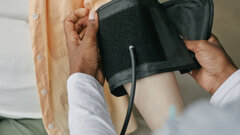






























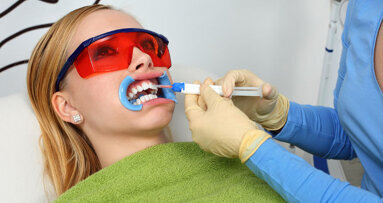
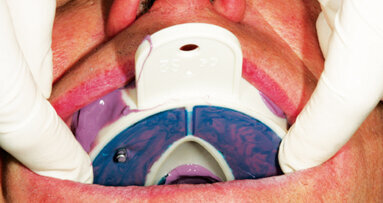
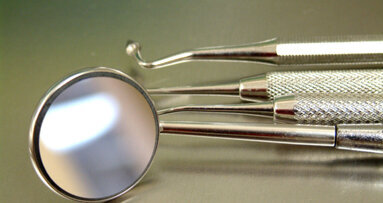

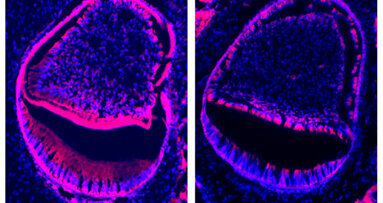
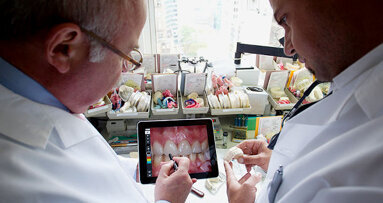




















To post a reply please login or register